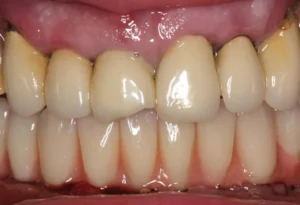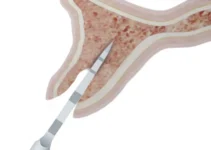Understanding the different aspects of dental bridges is essential for anyone considering this form of dental restoration. In this article, we delve into detailed reviews of various types of dental bridges, exploring their benefits, drawbacks, and suitability for different dental conditions. By providing comprehensive insights, we aim to equip you with the necessary information to make an informed decision about whether a dental bridge is the right choice for your oral health needs.
Understanding Dental Bridges: An Overview
Dental bridges are a common and effective solution for replacing missing teeth, and understanding their role in restorative dentistry is crucial for maintaining oral health. Bridges can not only enhance the appearance of your smile but also restore functionality in terms of chewing and speaking. They are typically recommended when one or more teeth are missing, helping to prevent the shifting of remaining teeth and the resultant bite issues.
With advancements in dental technology, today’s dental bridges offer a more natural appearance and greater durability. Understanding the types, materials, and purposes of dental bridges can help you make informed decisions about your dental care. In this article, we will delve into the specifics of what dental bridges are, the various types available, and the materials used in their fabrication.
Through this comprehensive overview, you will gain insight into how dental bridges work, and what to expect from the procedure. Whether you are considering getting a dental bridge or simply looking to expand your knowledge on the topic, this information will provide you with a solid foundation.
What are Dental Bridges?
Dental bridges are prosthetic devices designed to “bridge” the gap created by one or more missing teeth. A typical dental bridge consists of two or more crowns for the teeth on either side of the gap, known as abutment teeth, with a false tooth or teeth in between. These false teeth are called pontics and can be made from various materials like gold, alloys, porcelain, or a combination of these.
The procedure for getting a dental bridge usually involves multiple steps, starting with the preparation of the abutment teeth. This may include reshaping these teeth to fit the crowns properly. Next, an impression of your teeth is taken to create a mold, which is used to design your custom bridge. Once the bridge is made, it is fitted and adjusted for comfort and proper bite alignment before being permanently cemented in place.
Types of Dental Bridges
There are several types of dental bridges to consider based on your specific dental needs. The most common types include:
- Traditional Bridges: These are the most popular type, consisting of one or more pontics held in place by dental crowns on the abutment teeth. Traditional bridges are typically made of ceramic or porcelain fused to metal.
- Maryland Bridges: Also known as resin-bonded bridges, these are often used for missing front teeth. They are made of porcelain fused to metal or ceramic teeth, supported by a metal or porcelain framework bonded to the back of adjacent teeth.
- Cantilever Bridges: These are used when there is only one adjacent tooth next to the missing tooth gap. Cantilever bridges are less common and typically used in areas of the mouth with less bite force.
- Implant-Supported Bridges: These bridges are similar to traditional bridges but are supported by dental implants instead of crowns on natural teeth. They offer increased stability and require a surgical procedure to place the implants.
Each type of dental bridge has its advantages and limitations, and your dentist can help determine which is best suited for you based on various factors such as the location of the missing tooth, the condition of adjacent teeth, and your overall oral health.
Materials Used in Dental Bridges
The materials used in dental bridges can significantly influence the bridge’s appearance, durability, and suitability for different areas of the mouth. Common materials include:
- Porcelain: Known for its natural appearance, porcelain is often used for visible areas such as the front teeth. It can be color-matched to look like natural teeth, providing an aesthetically pleasing result.
- Metal Alloys: Metals like gold or silver alloys are highly durable and are typically used in areas subjected to high bite forces, like the back teeth. These materials, however, are less aesthetically pleasing.
- Porcelain Fused to Metal: This material offers a balance between strength and appearance. The metal provides durability while the porcelain coating gives a natural look.
- Zirconia: Known for its strength and aesthetic qualities, zirconia is increasingly popular for dental bridges. It is highly durable and can be color-matched to the natural teeth.
Choosing the right material for your dental bridge will depend on multiple factors, including the location of the bridge, your bite force, and personal aesthetic preferences. Discuss these options with your dentist to find the material that best meets your needs. If you found this article informative and would like to learn more about dental procedures and oral health, be sure to check out our other articles on related topics.
Benefits and Risks of Dental Bridges
Dental bridges are a common solution for replacing missing teeth. They help restore the function and aesthetics of your smile. However, like any dental procedure, they come with their own set of benefits and risks. It’s crucial to understand both aspects before deciding if dental bridges are the right choice for you.
The procedure involves anchoring an artificial tooth, known as a pontic, between two crowns that are placed on the adjacent teeth. This technique can be highly effective but requires careful consideration and consultation with a dental professional.
In this article, we’ll delve into the advantages and potential drawbacks of dental bridges to help you make an informed decision. By understanding the pros and cons, you can weigh your options and choose a solution that best fits your needs.
Advantages of Dental Bridges
One of the primary benefits of dental bridges is the ability to restore the function of your teeth. If you’re missing one or more teeth, a bridge can significantly improve your ability to chew and speak properly. This is crucial for maintaining a high quality of life.
Dental bridges also offer aesthetic benefits. Missing teeth can create gaps that detract from your smile. A well-constructed bridge can fill these gaps, helping you regain confidence and self-esteem. The materials used in modern bridges are often indistinguishable from natural teeth, making them a seamless addition to your smile.
Another practical advantage is that dental bridges can help maintain the shape of your face. Missing teeth can cause the remaining teeth to shift, leading to changes in your facial structure and bite. A bridge helps to prevent this, preserving the natural alignment of your teeth and jaw.
Lastly, dental bridges are relatively quick to install compared to other options like dental implants. The procedure usually requires only a couple of visits, making it a convenient choice for many patients.
Potential Drawbacks
Despite their advantages, dental bridges are not without potential drawbacks. One of the main concerns is the need to alter adjacent teeth. The teeth on either side of the gap must be filed down to accommodate the crowns that hold the bridge. This can weaken these teeth and make them more susceptible to future dental issues.
Another drawback is the risk of decay. The area under the bridge can be difficult to clean, increasing the risk of plaque buildup and decay. It’s essential to maintain excellent oral hygiene to mitigate this risk, but it can be a challenge for some patients.
Dental bridges also have a limited lifespan. While they are durable, they typically last between 5 to 15 years. Factors like oral hygiene, the material of the bridge, and the patient’s diet can all influence the longevity of a dental bridge. This means that you may need to replace the bridge at some point, which can be an additional expense.
Lastly, some patients may experience discomfort or sensitivity following the placement of a dental bridge. While this usually subsides after a few weeks, it can be a concern for individuals with sensitive teeth or gums.
Understanding both the benefits and risks of dental bridges can help you make an informed decision about your dental health. If you’d like to explore more about this topic and other dental procedures, be sure to check out our other articles.
Insights and Reviews from Dental Bridge Users
Dental bridges are a popular solution for individuals missing one or more teeth. They not only restore function but also enhance aesthetics. Understanding the experiences of those who have used dental bridges can provide valuable insights for potential users. This section delves into firsthand accounts, common experiences, and expert opinions on dental bridges.
By gathering feedback from various users, we aim to shed light on the real-world implications and benefits of dental bridges. Additionally, insights from dental professionals will provide a comprehensive view, ensuring that you have all the information needed to make an informed decision.
Patient Testimonials
Many patients who have opted for dental bridges have expressed a significant improvement in their quality of life. For instance, Jane, a 45-year-old teacher, reported that her dental bridge not only restored her ability to chew but also boosted her confidence. “I can smile freely now without feeling self-conscious,” she states.
Similarly, Mark, a 50-year-old engineer, shared his positive experience, emphasizing the comfort and natural feel of his dental bridge. “Initially, I was worried about the fit and look, but my dentist did an excellent job. It feels just like my natural teeth,” he remarked.
These testimonials highlight the profound impact dental bridges can have on an individual’s personal and professional life. Many patients also appreciate the durability and longevity of dental bridges, making them a worthwhile investment.
Common Experiences
While patient testimonials provide individual stories, it’s also important to identify common themes and experiences among dental bridge users. One frequent observation is the initial adjustment period. Many users report that it takes a few weeks to get used to the sensation of a bridge in their mouth.
Another common experience is the need for proper oral hygiene. Dental bridges require meticulous care to prevent complications such as decay or gum disease. Most users find that incorporating simple changes into their daily routine, like using special floss or interdental brushes, helps maintain their bridges effectively.
Patients also commonly report a marked improvement in their overall oral function. Being able to chew and speak without issues is a significant benefit that many users appreciate. In essence, while there are adjustments to be made, the benefits far outweigh the initial challenges.
Expert Opinions
Dentists and dental specialists emphasize the importance of choosing the right type of dental bridge for each individual case. Dr. Smith, a leading prosthodontist, explains, “The success of a dental bridge largely depends on the patient’s oral health, the structure of the remaining teeth, and the specific needs of the individual.”
Experts also stress the significance of regular dental check-ups to monitor the condition of the dental bridge and the health of the surrounding teeth and gums. Dr. Johnson, a renowned implantologist, notes, “Even the best dental bridges require ongoing maintenance. Regular visits to your dentist will ensure the longevity and effectiveness of your bridge.” Moreover, advancements in dental technology have led to the development of more durable and aesthetically pleasing materials, enhancing the overall user experience. Experts encourage patients to discuss these options with their dentists to choose the most suitable material for their bridges.
In conclusion, dental bridges offer a valuable solution for many individuals, restoring both function and aesthetics. The combination of personal testimonials, common experiences, and expert opinions provides a well-rounded understanding of what to expect. For more in-depth information on dental solutions, be sure to read our other articles.
Understanding Dental Bridges
Choosing a dental bridge is a significant decision when it comes to dental restorations. Here are some common questions to help guide you in understanding and selecting the right dental bridge for your needs.
What should I consider when reading reviews about dental bridges?
When reading dental bridge reviews, consider not only the durability and aesthetic outcome discussed but also the patients’ satisfaction with the procedure and comfort level during and after the installation. Reviews can often highlight a dentist’s skill and approachability as well as the functionality of the bridge. Make sure you also look at recent reviews to get the most current feedback.

My name is Salman Kapa, a 73-year-old expert in bone regeneration and dental implantology. With decades of experience in the field, I am dedicated to advancing our understanding of oral health and hygiene. Through my research and writing, I aim to contribute to the development of innovative solutions in dental care.




